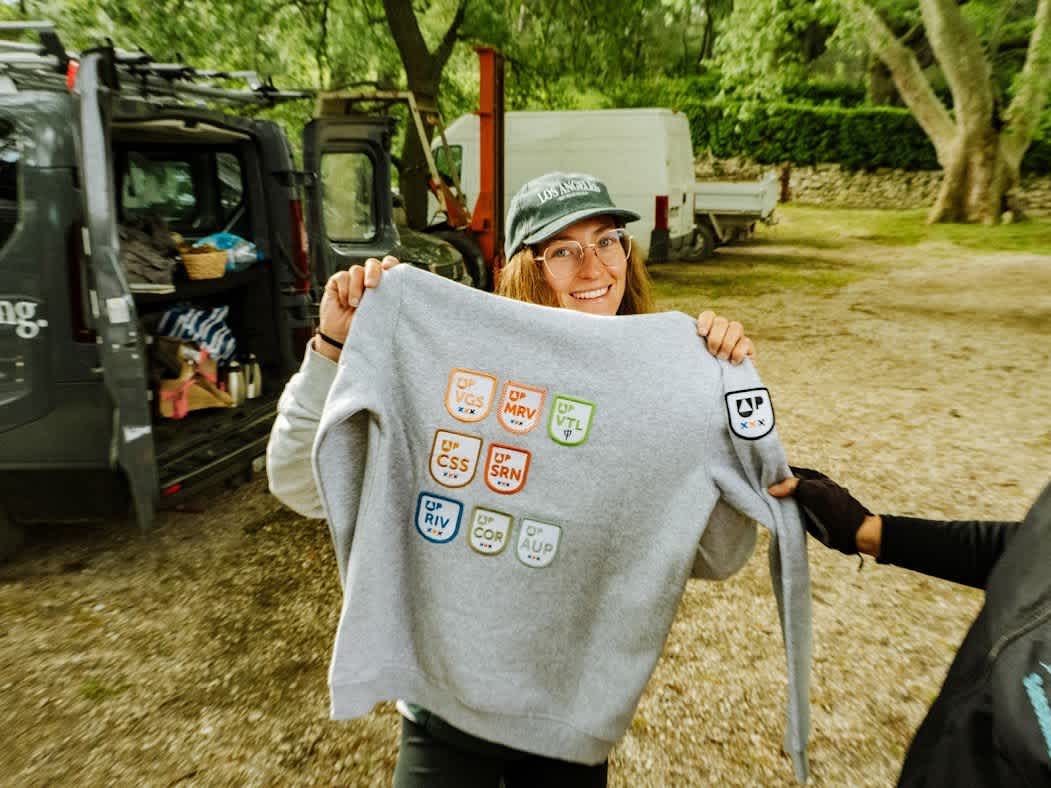How to dress for winter riding?

Winter is just around the corner and even though the temperatures are dropping, there’s no need to stop riding and retreat indoors to the turbo.
The key to keeping warm is… staying dry!

Gravel is ideal for year round riding, on dry trails and muddy tracks alike. Winter riding needs good kit, and there’s two golden rules to help keep you as warm and dry as possible:
Look after your extremities - your head, hands and feet.
Think layers! Three is ideal on top - a technical base layer, a warm insulation layer and a waterproof and windproof outer layer. These layers work together to wick away perspiration and protect you from the elements.
The first layer is your technical base layer, and its aim is to keep you dry by wicking away any perspiration that might follow your effort! It should be fairly tight-fitting with long sleeves close to your skin. Merino wool is particularly good at keeping you warm, and it’s very odour resistant as a bonus!
Your second layer is there to keep you warm, insulating you from the cold outside. The thickness will depend on just how cold out it is, and can vary from thin technical fleeces to cycling specific jackets with padded panels to keep your core toasty.
Third will be your wind and waterproof jacket, keeping that icy air out and any showers/spray too. There’s lots of styles available depending on how extreme the weather will get. Look out for the height of the collar, length at the back (to protect you from spray) and pockets… depending on the fabric and waterproof membrane, a jacket can be very compact and packable to less than a fist, or bulkier and more insulating.
For all of these layers you can get cycling specific kit, but trail running and mountain sports kit works just as well.
Onto your bottom half - bibshorts.

Option no1 is winter bib tights, full length leggings with a built in chamois, and often double thickness with fleece on the knees and shins.
Option no2 is to keep your usual riding shorts and add either knee or leg warmers or winter leggings for when it's really cold. Knee/leg warmers are like the leg sections of leggings with grip-strips around you thighs, so that you have 1 layer over your legs. Ideal for when it’s cold in the mornings and warm in the afternoons as you can easily take them off and stuff them in a pocket once the suns out!
And last but very much not least - your extremities.

Firstly your head…
We lose 40% of our heat through our head, so it’s super important to keep it warm! You can use a headband, a thin beanie or your hood under your helmet, but it’s important to make sure your helmet is properly positioned with the extra layer. Often cycling specific jackets have an extra large hood to fit over a helmet too. Don’t forget a buff or neck warmer to protect your nose and face when needed.
And to your feet,
which are really sensitive to the cold cycling as they don’t move much…. A good pair of warm (ideally merino wool) socks are a crucial addition to your wardrobe.
💡 Heres a tip from the mountains, ski touring socks are perfect for winter riding. They are usually thinner than normal ski socks, wick well, are blister resistant and really warm.
Another must-have is either over-shoes or toe covers to keep the wind chill off your toes and and rain or spray from getting in, you can get full neoprene and waterproof ones too.

Hands
Long finger gloves are also worth their weight in gold, ideally wind and water proof with a good fleece lining to keep your fingers toasty. Make sure they aren’t too bulky as you’ll need your dexterity for your brakes and bike handling… and a nice long wrist section will keep any draughts off your wrists.
So there you have it, the winter riding kit 101. So what are you waiting for, you’d better get out riding!



